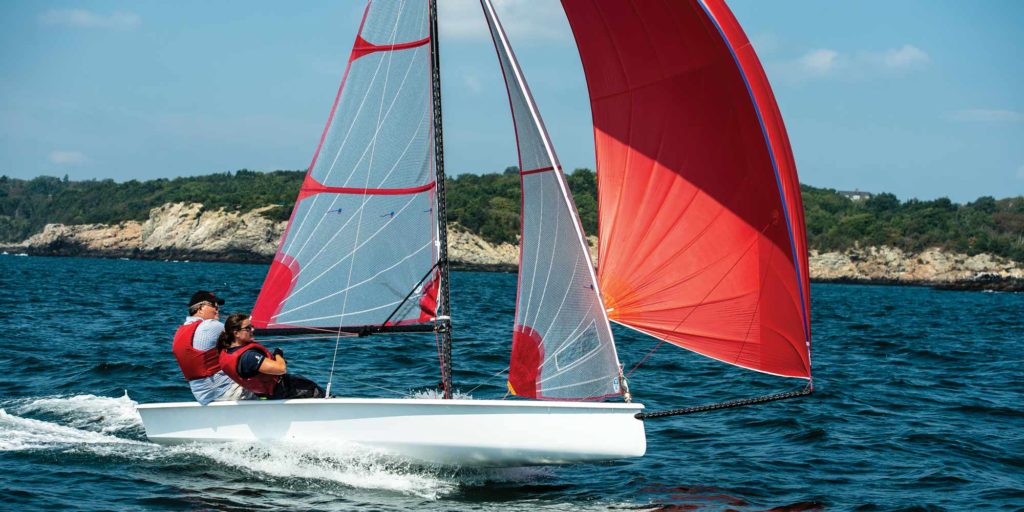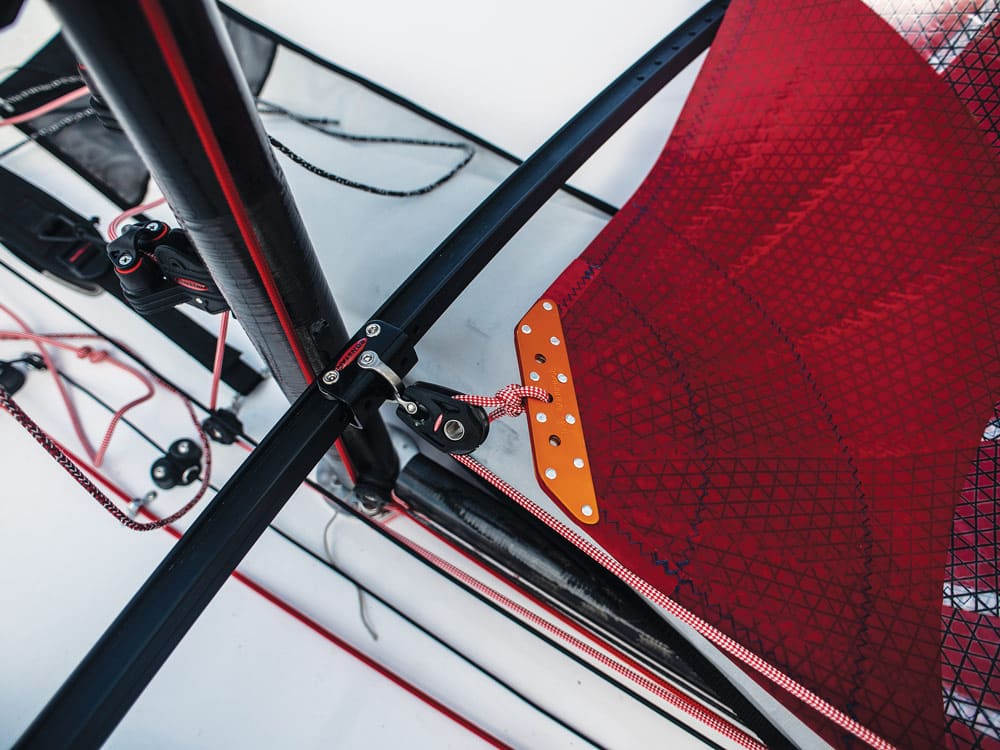
The thing is fast!”
These are the first words from judge Chuck Allen’s mouth after a breezy morning test session with the Beneteau First 14 on which he and the BOTY team carved wakes all across Narragansett Bay. In 10 to 15 knots of wind, the boat most definitely scoots along as promised. Hours earlier, the judges knew very little about the boat, but when it comes time to wrap up the test, they’re like teens on a joyride — they don’t want to get off.
The Beneteau First 14, as tested in Newport, is built by Seascape, which has quickly built a reputation for its innovative keelboats. Beneteau recently purchased a controlling stake in the Slovenian builder, bringing all Seascape models into the fold of its First range. This clever 14-footer came with the sale, and its new decals were barely dry before its BOTY test sail.
The First 14 is a sharp-looking hull (designed by Samuel Manard, responsible for all other Seascape models to date), with a surfboardlike shape, angular lines and an incredibly clutter-free and comfortable cockpit. For a little boat with a three-sail inventory, the judges note, it’s impressive how little rope there is in the cockpit. The overall package is a testament to the engineers and sailors at Seascape, who use smart ideas like the forked gooseneck attachment that allows the boom to rotate around the two-part stayed carbon rig, the single centerline self-tacking jib sheet and the dual centerboard slots. The daggerboard goes into the aft slot when singlehanding, and forward when doublehanding. One person can sail it with the mainsail only. Add the jib and spinnaker into the mix as conditions dictate.
The First 14 is ideally designed for two, however, because when the full power of the sail plan is in play, the judges say, the experience is exhilarating. It’s a fast boat with a lot of stability in its beam and volume. There’s flotation to support 500 pounds of combined crew weight, and the judges noted that at only 140 pounds itself, the boat is lively, with either one or two crew.
The high-aspect spinnaker uses a single-line launch and retrieval system, so three or four tugs gets it flying. Same for the reverse; the spinnaker gets pulled into the foredeck throat and into the floor-mounted spinnaker sock. Everything about the boat is effortless, the judges say after sailing with different crew combinations, and all the systems work as they should. “I was amazed at how fast and excellent it sailed at all angles,” Greg Stewart says. “It was really enjoyable. I could see sailing it by myself, in any breeze.”

When planing, the bow rises quickly and water flow off the transom is sharp and clean. With narrow foils and a big square-top mainsail, the helm is head-whippingly responsive. “That might be my only criticism of the boat,” Allen says. “When we were ripping downwind, it was really easy to oversteer the boat. With even the slightest tiller adjustment, the boat responds immediately, so you have to be careful.”
Tom Rich is a fan of the boat’s single-sheet self-tacking jib, which rides on a curved track across the foredeck. “It worked magically, and moved the lead the right way when you eased,” he says, “so you can keep the shape you’d want.” As much as the judges enjoy sailing the First 14, their collective concern is its $16,000 price tag. With the most popular doublehanded dinghies costing nearly half as much, it’ll be difficult for Beneteau to build a one-design fleet in the United States. “For a two-person 14-foot boat, it sails superbly,” Stewart says. “But the price is considerable, for sure.”
For a sailor seeking a boat that delivers a superb experience up and down the wind range, however, and does not care for one-design racing, the First 14 is worthy of a closer look. Rig it up, invite a friend and have a blast, or just go it alone and enjoy the blissful sound of water hissing from the transom.









